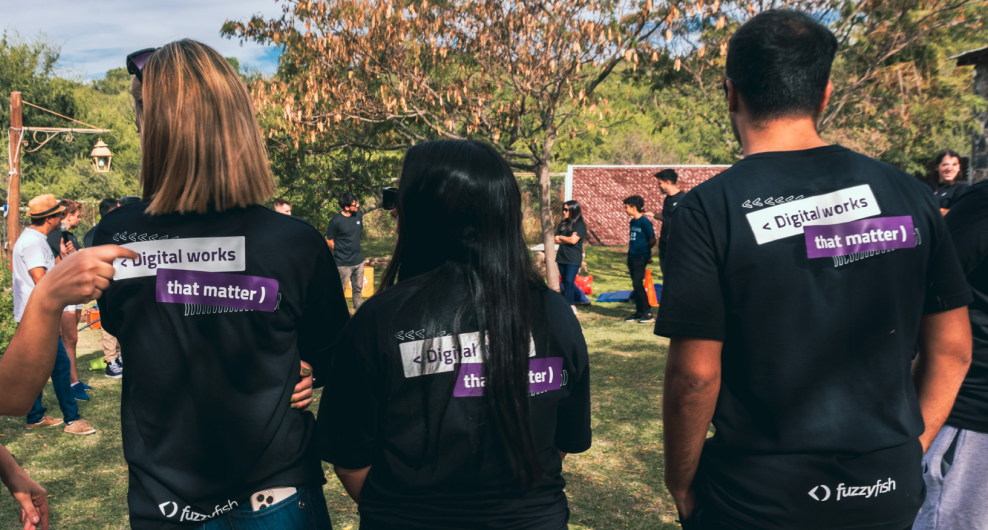Have you tapped into the power of data analytics yet? If not, you’re missing out on a huge opportunity to accelerate growth in your fintech lending business. Data is the fuel that powers smarter decision making, optimizes key processes, and uncovers new avenues for profitability. As a fintech leader, you have a wealth of data at your fingertips just waiting to be unleashed. By leveraging data-driven insights, advanced algorithms, and machine learning models, you can enhance your credit risk models, identify hidden opportunities, and better manage your loan portfolio. In today’s competitive landscape, data analytics is critical to gaining an edge. The good news is, you don’t need a huge team of data scientists to get started. With the right strategies and tools, you can unlock the growth potential of data analytics for smarter lending in your fintech company.
Harnessing the Power of Data: How Analytics Enhances Lending Decisions
As a fintech leader, you have a wealth of data at your fingertips. By harnessing the power of analytics, you can gain valuable insights into your customers and lending opportunities. This allows you to make smarter decisions and optimize your loan portfolio.
Analytics enhances credit risk assessment by leveraging machine learning models. These models analyze thousands of data points to detect patterns that predict a borrower’s ability and willingness to repay a loan. The models get smarter over time as they learn from new data. Using machine learning, you can assess credit risk more accurately, especially for borrowers with little or no credit history.
Analytics also helps you identify the most profitable lending segments and opportunities. By analyzing customer demographics, spending habits, location, and other attributes, you can determine segments that are not well served by traditional lenders. You can then tailor lending products to match their needs.
To leverage data analytics effectively:
• Invest in data infrastructure and talent. Hire data scientists and engineers to build models and systems to collect, analyze, and visualize data.
• Choose metrics that align with your business goals. For credit risk, monitor delinquency and default rates. For growth, track new customer acquisition and lending volumes.
• Continuously test and optimize your models. Evaluate model performance regularly using new data and make tweaks to improve accuracy and predictive power over time.
• Use insights to guide business decisions. Translate data into action by adjusting lending criteria, allocating resources to high-opportunity segments, or creating new products to fulfill unmet needs.
• Consider partnerships to access additional data. Partnerships with companies in adjacent verticals can provide useful data to enhance your models. But ensure you have customer permission and protect their privacy.
• Keep humans in the loop. While analytics and automation are powerful, human judgment is still important. Use data to augment, not replace, human decision making.
With an analytics-driven approach to smarter lending, you can achieve sustainable growth, healthy profits, and customer success. The future of fintech will rely on those who can unlock the most value from data. Are you ready to claim your competitive edge?
Identifying Profitable Borrowers Through Data-Driven Insights
As a fintech leader, you know that data is the key to smart lending. By analyzing insights from thousands of data points on each borrower, you can identify those most likely to repay their loans. Here are some tips to leverage data analytics for finding your next profitable customers:
Look beyond credit scores. Traditional scores only tell part of the story. Analyze spending patterns, income to debt ratios, on-time bill payments, and other attributes to develop a 360-degree view of the borrower. People with steady income and low revolving balances may still be good risks despite lower scores.
Harness the power of machine learning. ML algorithms can detect complex patterns in huge datasets that humans simply miss. Train models on your existing customer base to uncover the attributes of your most profitable borrowers. Then use those models to scan for similar prospects.
Track how life events impact repayment. Major events like job changes, marriages, or new mortgages often correspond with changes in spending and payment behavior. Monitor borrowers’ lives through social and web data to anticipate how events might impact their ability and willingness to repay. Then you can make smarter lending decisions.
Look at alternative data for thin-file or no-file borrowers. Many people have little to no credit history but are still trustworthy borrowers. Analyze things like rent payments, utility bills, insurance premiums, and mobile phone records. See if they demonstrate financial responsibility despite a lack of traditional credit. If so, they could be an untapped market.
The bottom line is that data analytics lets you base lending decisions on facts rather than hunches. By identifying the attributes of your star borrowers and finding others who match them, you’ll approve more applicants who truly deserve credit and fewer who don’t. And that’s a win-win.
Managing Loan Portfolios Smarter With Advanced Analytics
Managing your fintech’s loan portfolio requires more than gut instinct nowadays. Advanced analytics provides data-driven insights to help you make smarter decisions. By leveraging machine learning models, you can identify risks, spot opportunities, and optimize your portfolio.
Predict credit risk more accurately
Relying only on traditional credit scores leaves you vulnerable to missed risks or undiscovered prime borrowers. Machine learning models analyze thousands of data points to uncover complex patterns in applicants’ payment behaviors, financial statuses, and life events. These models can predict the probability of default with far greater accuracy, allowing you to price risk appropriately and avoid taking on too much bad debt.
Find your most profitable customers
Not all approved borrowers are equally valuable. Machine learning techniques like clustering and segmentation analyze your current customers to identify attributes of your most profitable clients. You can then tweak your underwriting model to favor applicants with similar characteristics. This helps you avoid less-profitable borrowers in favor of those most likely to generate higher returns over the lifetime of the loan.
Continuously optimize your portfolio
The job doesn’t end after loans are approved and funded. Regularly monitoring your portfolio and adjusting as needed is key. Track the performance of different customer segments, lending products, and risk levels. Look for any poorly performing areas and make changes, whether rebalancing your portfolio, altering underwriting strategies, or creating new products. Advanced analytics provides the insights to help you optimize your portfolio for the best risk-return balance.
Leveraging data analytics for smarter lending decisions is a must for fintech companies looking to improve outcomes, increase profits, and gain a competitive edge. By implementing machine learning models and closely monitoring your portfolio, you’ll make better choices, spot more opportunities, and build a healthier balance sheet. The result? Faster growth and a bigger bottom line.
Implementing an Effective Data Analytics Strategy: Tips for Fintech Leaders
As a fintech leader, implementing an effective data analytics strategy is key to unlocking growth for your lending business. Here are some tips to help you get started:
- Focus on high-impact areas
Don’t try to boil the ocean. Identify key areas where data-driven insights can have the biggest impact on your lending operations, such as credit risk assessment, customer acquisition, or loan portfolio optimization. Start with a targeted pilot project in one of these domains before expanding to other areas.
- Invest in the right talent
Hire data scientists, data engineers, and business analysts with experience in fintech or financial services. They will have the domain knowledge to ask the right questions, access relevant data sources, and build models that generate actionable insights. Provide ongoing training to help them keep their skills and knowledge up-to-date with the latest tools and technologies.
The fintech landscape is fast-changing. Select data analytics tools, platforms and software that are easy to integrate, update and scale as needed. Cloud-based solutions offer more flexibility and options to start small and upgrade as your needs evolve. They also provide access to new data sources that can enhance your models.
- Focus on model governance
Put guidelines and guardrails in place to ensure data models are transparent, accountable and unbiased. Define model performance indicators and thresholds, monitor models regularly, and retrain or replace underperforming models. Provide documentation on data sources, assumptions, and limitations to ensure models are used appropriately by business teams.
- Foster a data-driven culture
For an analytics strategy to be truly effective, it must be adopted across your organization. Educate all employees on the benefits of data-driven decision making and train key teams on how to leverage analytics tools and insights in their daily work. Share successes to showcase the impact and value of analytics. Building an analytical culture will maximize your return on investments in data.
Following these tips will position your fintech firm to tap into the power of data analytics and gain a competitive edge. With the right strategy, tools, talent, and mindset, data can drive smarter lending and fuel growth.
Conclusion
So there you have it – data is truly the key that can unlock tremendous growth for your fintech lending business. While the opportunities are abundant, the challenges are real. But by making data analytics a strategic priority, investing in the right tools and talent, and taking an iterative approach, you can leverage data to drive smarter lending decisions and stay ahead of the competition. The fintech companies that embrace data analytics today will be the ones still standing and thriving tomorrow. What are you waiting for? The future of data-driven lending is now.









